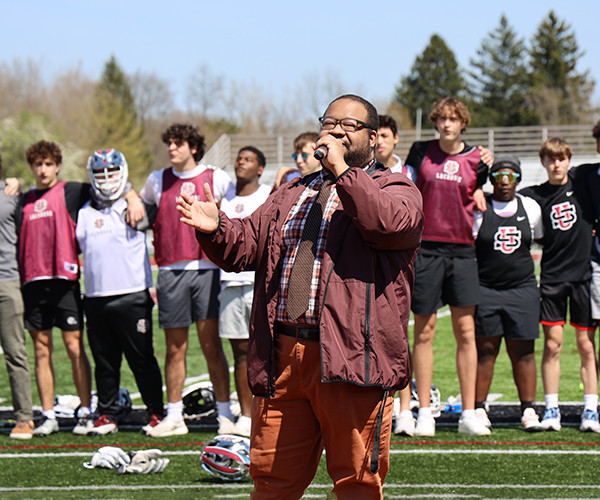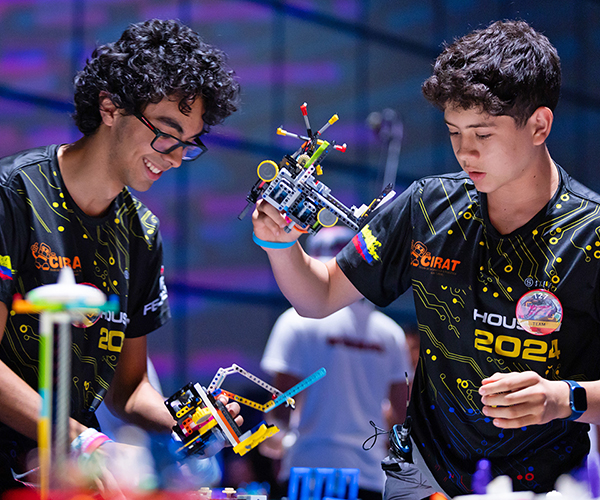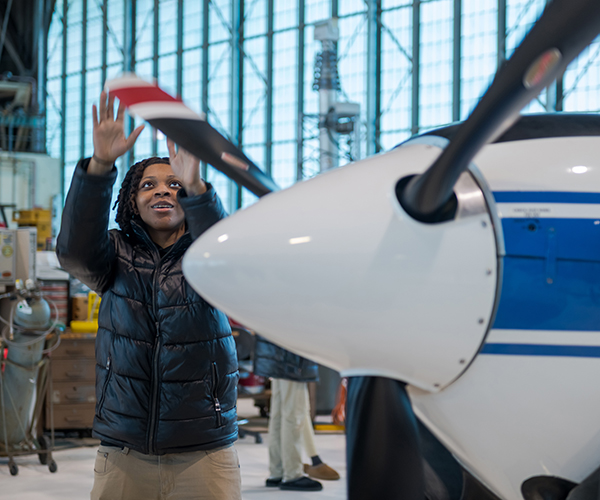The University of Akron has had a tradition of excellence in the interdisciplinary areas of science, technology, engineering and mathematics, even before it had a fancy acronym (STEM) and before it became the focus of national attention. So it should surprise no one that the university’s latest initiative takes its involvement to the next level, focusing on STEM education and developing a work force equipped for STEM employment.
“Over many years this institution has been developing and working a STEM strategy,” says Dr. Elizabeth J. Stroble, the university’s senior vice president, provost and chief operating officer, so this focus is nothing new. “In fact, because of our historic roots in this community and our partnership with the dynamic shifts of local industry, it is fair to say that The University of Akron was doing STEM before STEM was cool.”
The University of Akron’s strategy has four components: Creating access to science, technology, engineering and mathematics careers for young people, as early as middle school; enhancing STEM knowledge among area teachers; expanding undergraduates’ background in STEM topics through on-the-job experiences and direct roles in research; and creating systemic STEM capacity through shared-services models.
Through its summer program, which dates back 24 years, the university’s STEM education extends beyond the traditional school year. This year, 60 high school students participated, learning in a residential camp focused on STEM topics. UA also participated in the first statewide network of summer STEM institutes, allowing high school students to obtain dual high school and college credit.
The University of Akron’s commitment to this program goes beyond summer introductory programs. The early-college high school program began this fall with 100 students, and will add 100 each year for the next three years until it tops out at 400. The creation of a middle school, jointly operated by The University of Akron, Akron Public Schools, the city of Akron and the National Inventors Hall of Fame, is slated to open in 2009. The school will be underwritten by KnowledgeWorks, an organization that provides “funding and leadership for initiatives aimed at ensuring all students an education that prepares them for success in college, career and life in the 21st century” and GAR Foundation, a “charitable trust whose priorities include education, the arts, social services and activities that are judged for the general good of the community.”
The school’s focus will be on STEM basics such as science, technology and mathematics, and it will also serve as a training ground, preparing middle school students for STEM careers.
“STEM education goes beyond traditional models,” Stroble says. “We are taking it to the next level, sharing information and working side by side with young people. This program reaches a new population that we haven’t reached before.”
With its first-year curriculum already developed, the plan is for ninth-grade students to take classes on campus, but instructed by a separate faculty, not professors. Ultimately, students will function similarly to those enrolled in the Post Secondary Enrollment Option, mainstreaming with college students and taking college classes while in high school.
“STEM students do not need to wait to be graduate students to be directly involved in research side by side with our faculty and fellow students,” Stroble explains.



